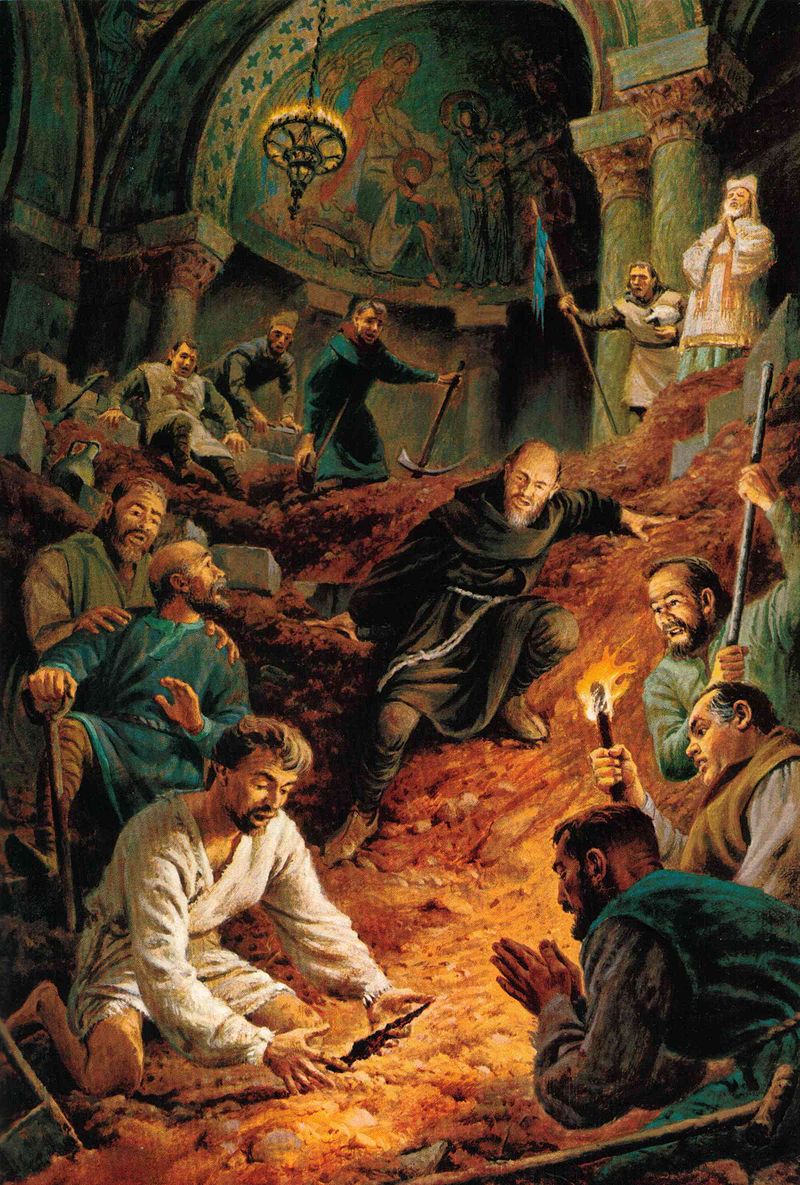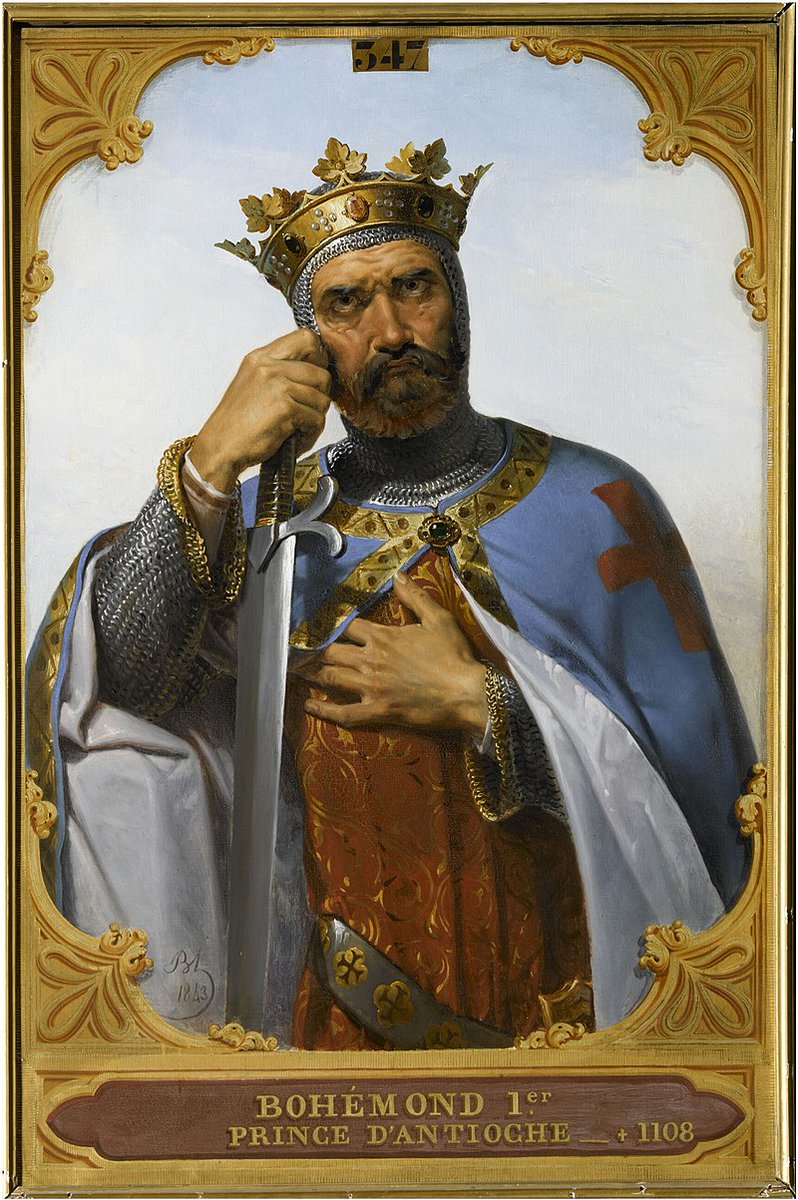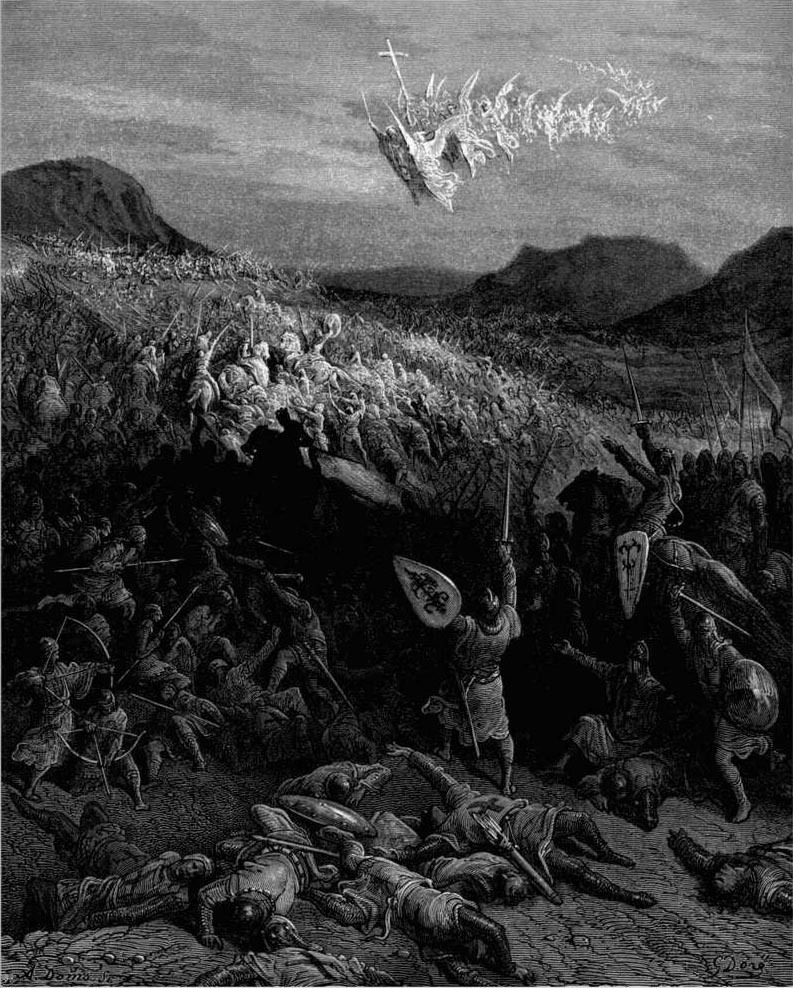
One of the finest crusader victories was the battle of Antioch in 1098, following their long siege of that majestic city. Displaying an unbreakable devotion to their cause, they managed to beat a much bigger force of Mohammedan reinforcements in a heroic open battle. Deus vult! 

This battle was part of the first crusade. As the crusaders crossed Anatolia, the well fortified city of Antioch became their biggest challenge on their way to Jerusalem. The crusaders lacked the siege equipment to break down the walls and the siege was turning into a nightmare. 

The siege has been going on since October 1097 until June of 1098 and during this time the crusaders were facing starvation and dire conditions. They finally managed to break into the city after a local Armenian guard betrayed the defenders and let the crusaders in. 



The crusaders managed to take over almost entire city of Antioch, except for a citadel on top of the hill which was guarded by an extra wall. However a huge Mohammedan army led by a Seljuk Turk Kerbogha, the mighty atabeg of Mosul, was approaching Antioch to deal with crusaders. 

The approaching large Mohammedan army which included levies from Baghdad, Persia, Palestine and Damascus meant that crusaders would soon turn from besiegers into besieged, as they would now have to defend the city they just conquered, and face an army much bigger than theirs.
The crusaders were in a bad situation. Many of them deserted, most notably Stephen of Blois who on his way home informed the Byzantine emperor Alexios that the crusaders remaining in Antioch were as good as dead and that the crusades had practically failed.
Stephen of Blois' report convinced the Byzantine emperor Alexios that the cause is futile and he didn't send the reinforcements he was planning to send to the crusaders. He returned to Constantinople rather than risk battle with the large Seljuk Mohammedan army.
Inside the city, the remaining crusaders were starving and most of their horses died. Despite this, their morale was high because of religious fervor that inspired them. The long campaign had hardened them and made them into even better and more disciplined warriors.
The morale of the crusaders was increased even more after a mystic from southern France Peter Bartholomew discovered the Holy Lance, after having visions of st. Andrew telling him the lance was inside the city. The Holy Lance inspired immense fighting spirit in crusaders! 



The crusaders also had a brilliant leadership. The Norman knight Bohemond of Taranto distinguished himself the most at Antioch, a brave, cunning and charismatic man, a powerful warrior or noble Sicilian Norman lineage, a true giant both in his physique and his legacy. 

As the enemies were approaching Bohemond divided his army into six divisions: one he commanded himself, other five were led by Hugh of Vermandois and Robert of Flanders, Godfrey of Bouillon, Robert of Normandy, Adhemar of Le Puy, and Tancred of Hauteville and Gaston IV of Béarn.
The crusader army numbered around 20000 men and was facing a twice larger army of Kerbogha. Instead of defending the city, the crusader army decided to engage the huge enemy force on the open battlefield and marched out of the city gates, carrying their splendorous noble banners.
Kerbogha asked crusader prisoners in his camp what those banners meant, and they explained him that he was going to fight men of great worth, "This one belongs to Robert, this one to Godfrey, that one to Hugh. This is the nobility, the great strength defending the city."
A brave Provençal crusader knight named Raymond of Aguilers, who was one of the most pious, carried the Holy Lance before the crusaders as they marched into battle, with Kerbogha's impressive army in their sight and waiting for them.
Kerbogha had two options, to either attack the crusaders immediately or wait for them to assemble in full force. He chose the latter option, underestimating the smaller crusader force and hoping to destroy them all in one single battle, to avoiding a possible long siege.
The crusaders were left with only around 200 horses at the time and their army consisted mostly of infantry. It's truly a testament to their faith in God how this starved and depleted force of crusaders decided for such an aggressive approach in face of more numerous enemy.
In the chronicle Gesta Tancredi, these inspiring words are written about these brave crusaders: "Behold the steadfastness, behold the constancy of martyrdom. Athletes of Christ, glory of the entire world, take vengeance with your right hands, you few against a hundredfold enemy."
Kerbogha decided to resort to ancient Seljuk tactics for this battle and tried to drag crusaders out and make them overextend their army with horse archer attack, but the crusaders held their formation and withstood the attack with arrows, just like they did at Dorylaeum before.
As the crusader infantry held firm, the Turkish cavalry tried to outflank the crusaders but Bohemund anticipated it and created a seventh division led by Rainald of Toul, another prominent and brave nobleman. He led a ferocious charge which pushed the Turks back. 

The crusader army then launched a big counterattack. The Mohammedan vanguard broke and fled in panic. The panic soon started spreading over their entire army. Crusader infantry charge was disciplined and devastating, while the Mohammedans were in chaos. 

The crusaders reported visions of St. George, St. Mercurius and Saint Demetrius among their ranks as they kept advancing and slaughtering the Mohammedans. 



Gesta Tancredi reports how terrified the foes were of the pious crusaders, "At the sight of the cross, the Persians lost their sight. They trembled, shook, and shuddered at its brilliance. ... Thus, they showed themselves to be cattle while the Franks were zealous lions."
The crusader victory was complete, with their enemies fleeing in all directions, and Kerbogha himself barely escaping death. Crusaders kept chasing their foes and killed many, inflicting heavy casualties on the big Mohammedan coalition.
The crusaders would go on to conquer Jerusalem, but the victory at Antioch was probably the most crucial victory of the first crusade. They won thanks to their faith in God and never stopped believing in their victory despite all odds. Their battlecry Deus vult proved true!
• • •
Missing some Tweet in this thread? You can try to
force a refresh


















